Residents Uninformed of Lake Manatee Dam Risk Before Storm

As Tropical Storm Debby moved across Cuba Friday, Aug. 2, the National Hurricane Center warned of heavy rain and flooding along Florida’s west coast.
“The combination of storm surge and tide will cause normally dry areas near the coast to be flooded by rising waters moving inland from the shoreline,” the 11 a.m. advisory read. Up to 12 inches of rain was forecast.
Manatee County officials have known for years that an aging and problem-plagued dam at Lake Manatee posed a threat to public safety, but reduced outflow 48 hours before Debby instead of increasing it ahead of forecasted rainfall, according to records obtained by the Florida Trident.
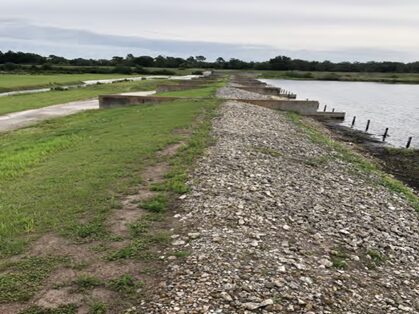
By 8 a.m. Saturday morning, the rainfall forecast was revised upward to a maximum of 15 inches. By 5 p.m. Saturday, the forecast called for up to 18 inches. Despite the rising threat, records show a steady decrease in water discharged from the dam beginning two hours after that last warning. By early Sunday morning, only one gate was discharging water at a trickle.
It was only after Debby’s rain bands began to hit that Manatee officials increased the amount of water flowing out of the lake. But it wasn’t enough. By Monday morning, officials decided to take drastic action, allowing millions of gallons of water to flow from the lake.
Residents were given no warning about the release of water. Hundreds had to be evacuated afterwards and numerous homes were destroyed. Residents are angry and demanding answers.
County officials knew they had a potential catastrophe on their hands. A document dated two months earlier included a stark warning: Unless long-delayed, critical repairs were made to the dam before hurricane season, the aging and fragile dam could suffer an “uncontrolled release” of water.
According to engineering reports reviewed by the Trident, the only option to prevent a catastrophic collapse of the entire 6 billion-gallon reservoir was to remove earthen plugs above an emergency spillway just to the north of the dam. The plugs and emergency spillway were designed to relieve pressure on the dam by opening an additional channel to discharge water.
The engineering feat had never been done before during a rain event. No one knew for certain what would happen. But officials did know one of three gates at the dam was inoperable, restricting the ability to discharge water.

Despite the escalating risk, the public was not informed until after a crane had removed two plugs from the spillway during a two-hour period at the height of the storm on Monday, August 5. The removal of these plugs caused an additional one to dislodge, and each removal sent a surge of water downstream.
Meanwhile, Deputy County Administrator Courtney DePol, who is in charge of public safety, departed for a European vacation the day before the storm struck. County officials declined to explain why she departed despite the known threat.
Commissioner Mike Rahn and Public Safety Director Jodie Fiske held social media briefings from the Emergency Operations Center earlier Monday morning, including an update by Rahn just 32 minutes before the emergency spillway release. Neither mentioned the dam nor warned residents of the impending water surge.
As reported in the Bradenton Times, the flooding outraged residents who received conflicting alerts to “leave now,” only to find exits blocked by floodwaters. More than 250 residents were rescued by high-water vehicles.
The disaster worsened as millions of gallons of raw sewage and untreated wastewater spilled into rivers and streams due to the flooding and power failures at dozens of lift stations that pump sewage and wastewater to a treatment plant for processing.
Mother Nature dealt another blow at the worst possible time. On Monday between 7:30 a.m. and 1:30 p.m., the new moon phase triggered two high tides, forcing water inland and preventing its escape to the Gulf of Mexico. The release from the emergency spillway occurred precisely between these tidal events, exacerbating the flooding.
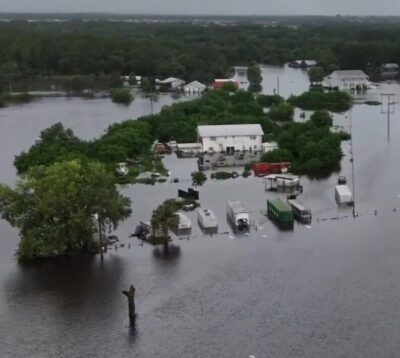
in property damage. (Credit: Chris Whittaker)
Commissioner Rahn told the Trident the earthen plugs are the first line of defense if the discharge rate of rainwater could not keep pace with inflow. Other experts consulted by the Trident said it was the only option. Doing nothing would have been catastrophic for the dam, Rahn said. “It would have been devastating. It would have been a tsunami,” he said.
It’s unclear why county officials waited to lower the lake further before the storm arrived or warn residents about the fragile dam.
Many residents blame county officials for the sudden water release from the Lake Manatee Dam during the storm. Manatee County commissioners faced stern criticism Tuesday morning, the first commission meeting after the storm. “We have a neighborhood here that does not trust the words coming out of your mouth,” Matthew Sauchinitz said of the Braden River Club neighborhood.
His wife, Jill Sauchinitz, tearfully told commissioners of the total loss of their flooded home and its contents. “All of our lives are on the curb. We are displaced from our homes,” she said. “We demand an investigation.”
Dalton Nelson, who lives off Rutland Road in eastern Manatee County, asked commissioners what they were hiding. “Messages didn’t get to us until hours after the dam release,” said Rutland.
Others blame the meteoric growth in east Manatee.
“There’s been a massive impact on the watershed,” said a former senior county official who requested anonymity for fear of retaliation. “The models for how water flows are useless. Soils that previously absorbed water are now compacted, elevated and full of concrete.”
A troubled dam
Constructed between 1965 and 1967, the dam sits at the head of a reservoir on the Manatee River approximately 20 miles upstream of its discharge point into Tampa Bay. The dam has three separate gates standing 15 feet high and 31.5 feet wide that can be opened to a maximum height of 11 feet.
The watershed of eastern Manatee County drains into Lake Manatee, which is the primary source of drinking water for Manatee’s urbanized area and a substantial portion of the northern part of Sarasota County. Manatee is contractually obligated to discharge between 275,000-650,000 gallons of water a day through the dam, depending on downstream levels.
However, the dam poses a significant disaster risk.
Following a similar rainfall event in 2003, a National Weather Service report described how a catastrophe was narrowly avoided at the dam. A jammed gate restricted the release of water through the dam. With the lake “on the brink” of breaching the emergency spillway, divers were sent underwater to repair before the nuclear option was triggered – an event eerily similar to what unfolded last week with the center gate inoperable. However, in 2003, unlike the recent crisis, residents were alerted and evacuated before the lake reached the emergency spillway level, according to the Gainesville Sun.
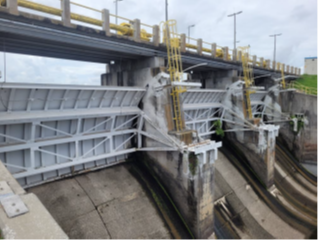
In 2015, the history of the dam was featured as a cautionary tale in the Journal of Dam Safety. That article chronicled design flaws ignored for decades despite 9 separate reports and investigations.
The article focused on a startling discovery in 2013 of erosion and voids beneath the spillway structure, exposing a serious threat to the dam’s integrity. This finding led to a 2014 report that concluded the dam was in a “severely stressed state.” A 2020 dam inspection report by Dr. Glen Andersen, at the time, a consulting engineer for the county, summarized the danger.
“The Lake Manatee Reservoir Dam has experienced a severe internal erosion and piping failure mechanism throughout its service life,” Anderson wrote. “The result …was a significant loss of integrity of portions of the embankment’s core (especially in the immediate vicinity of the Service Spillway) and the development of an active set of interconnected voids under the Service Spillway approach walls, downstream training walls, stilling basin, and discharge apron. This damage could have resulted in an uncontrolled release of the reservoir.”
Despite emergency repairs that followed those findings, the dam continued to pose a significant hazard. Phase II repairs, delayed since 2015, are not scheduled to be completed until December this year.
A ticking bomb
Records show that the lake discharge slowed in the 48 hours before Debby neared Manatee County. A monitoring station just below the dam at Rye River Road measured the reduced discharge, showing the water level below the dam had dropped by 60% in the 48 hours before the storm. At 1:45 p.m. on Friday, Aug. 1, the height was 5.4 feet. When the storm neared Manatee County late Sunday morning, the gage height in the river had dropped to 2.3 feet.
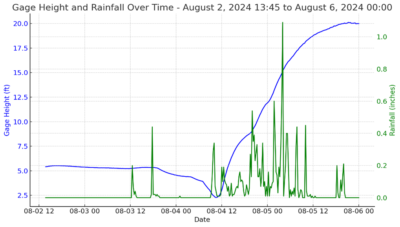
At 9:19 a.m on Sunday, Aug. 4, Public Safety Director Jodie Fiske posted a video update on X, formerly Twitter, from the EOC. She did not mention the crisis developing at the dam.
Just before noon on Sunday, several officials, including Congressman Vern Buchanan, county commissioners Mike Rahn and Amanda Ballard, Bradenton Mayor Gene Brown, county administrator Charlie Bishop, EOC chief Matt Myers, and Public Safety Director Fiske, held a press conference.
Fiske, seemingly unaware of the updated weather forecast from Saturday afternoon forecasting up to 18 inches of rain, mentioned rainfall potential of up to 12 inches.
No one at the press conference mentioned the potential danger at the dam.
Monday, August 5
In the 24 hours after the press conference, more than a foot of rain would raise the lake level considerably. Two dam gates were fully opened, while the third remained inoperable.
County officials described a chaotic scene early Monday morning at the Emergency Operations Center. Sewage pumping stations were failing countywide. Roads were flooded. The situation was grave at the Lake Manatee Dam as the water level continued to rise dramatically.
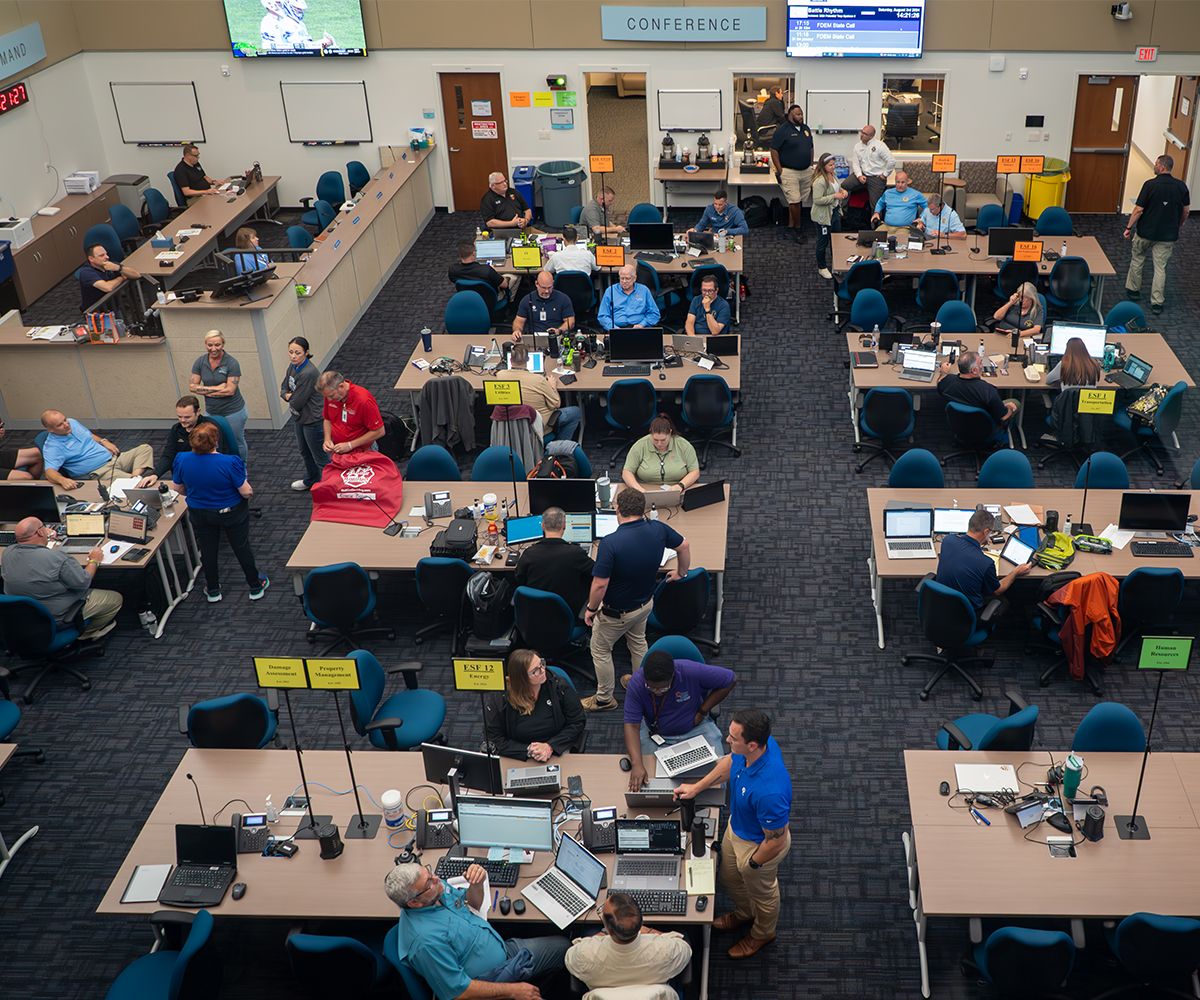
“We were frustrated with the lack of information,” said one county source who spoke on condition of anonymity. The source added that employee turnover during the past four years had led to operational brain drain at the county: “Institutional knowledge within the county has been jettisoned.”
The dam faced increasing stress as rainwater coming in far exceeded water outflow. A critical decision on preventing a catastrophic collapse loomed.
To relieve pressure from the dam during a significant rainfall event, the design specifications of the emergency spillway call for the 8 earthen plugs to automatically dissolve at incremental rises in the reservoir water level between elevations of 44 and 45.5 feet. The plugs can also be removed manually.
At 9:50 a.m., Rahn gave an update on X, without mentioning the dam.

But just 32 minutes after Rahn’s update, internal EOC communications show a decision was made to remove the first plug at the emergency spillway. Transportation officials at the EOC scrambled. Buses were sent to staging areas for evacuations. “Need Bus out to Lucy William on Ft Hamer and Haile Middle due to Reservoir spillway release,” said a 10:22 a.m. entry on the “significant events” log maintained at the EOC.
Eight minutes after the emergency spillway release county officials sent a confusing emergency alert to some residents via the Integrated Public Alert & Warning System (IPAWS). As reported first by the Bradenton Times, the alert said:
“Manatee Dam doing strategic release to cause dangerous swift moving water and flooding. Leave area NOW. Shelters available. Highwater vehicles being staged in area. Call 311 for information. Use 911 for emergencies ONLY.”
A second plug was pulled at 12:20 p.m. Again, residents were not told beforehand. An IPAWS alert at 12:30 p.m. said: “Manatee Co. FLOOD IMMINENT from Lake Manatee Dam release. Swift water and flooding imminent. Shelters are open. Call 311 for information. Use 311 for emergencies.”
James Nicholson, media information officer for the Emergency Operations Center, told the Trident the alerts were sent because “there was a thought that there could be imminent danger. Whenever an IPAWS alert is sent, there is an actual imminent threat that could jeopardize property or life.”
Asked whether deputy administrator DePol participated in any emergency management decisions, James Nicholson, media information officer for the Manatee Emergency Operations Center, said “I don’t believe she participated. She was out of the country.” Other officials said DePol’s absence had no effect on decisionmaking.
At the storm’s peak, the reservoir rose to 41.97 feet. At the time the earthen plugs were removed, sending water over the emergency spillway, the level was 40.5 feet, well below the 44 feet the plugs were designed to automatically dislodge in an emergency.
According to multiple interviews conducted by the Trident, a crane removed two large earthen plugs from the emergency spillway during a two-hour interval. A third plug dislodged after the second plug was removed. After the second plug was removed, a third plug became dislodged. The removal of each plug led to an immediate and uncontrolled release of water. The Rye Road monitoring station, the closest station downstream from the dam, showed the impact, recording water levels exceeding 18 feet.
The future of the dam
In the immediate aftermath of the storm, county administration focused on cleanup and seeking available federal disaster funds. Many of the homes flooded were not in flood zones, so homeowners did not carry flood insurance.
On August 7, the day after the storm, Governor Ron DeSantis visited Sarasota and Manatee County to survey the damage. Arriving by a National Guard Blackhawk helicopter, DeSantis made an unannounced visit to the dam before leaving the area. Records show DeSantis was at the dam for 45 minutes. Efforts to reach the Governor about his visit to the dam were unsuccessful at the time of publication.
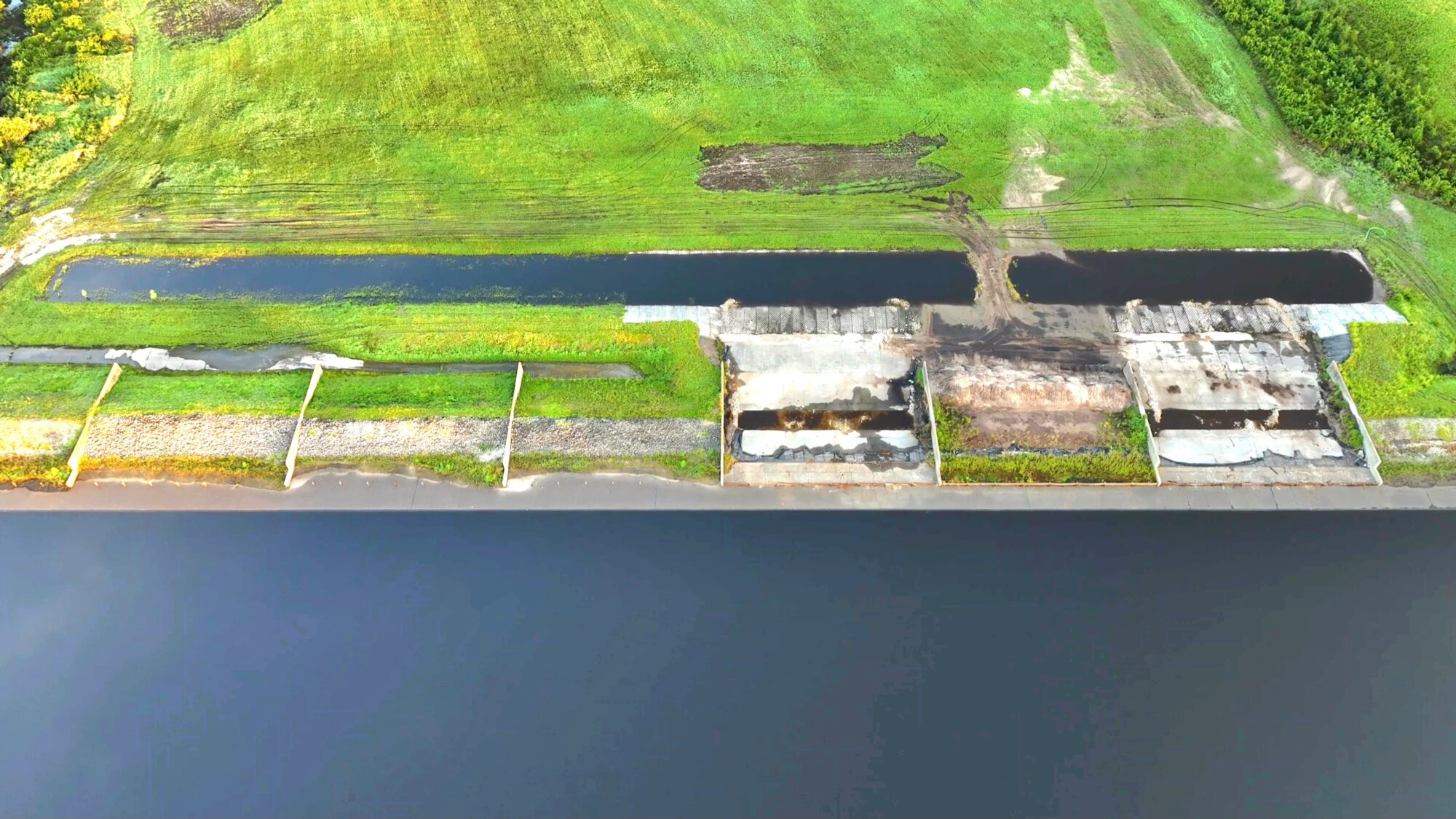
At their meeting on Tuesday, county commissioners unanimously agreed on an independent investigation. Commissioner George Kruse said the county needs to assess “what we did right, what we did wrong. It needs to be independent.”
The county has struggled to secure bids for dam repair work due to the high risks associated with the current design and past failed repairs. At best, the current work is a continuation of a band-aid approach while the county searches for a permanent solution. The disaster will likely renew focus on a previous recommendation for a new spillway at a cost of $136 million. The project is an unfunded item on the county’s Capital Improvements Project list until at least 2028.
Rahn has also directed county administration to improve communications and prepare lessons learned from the disaster.
“We are going to do a Dam 101 and do a better job informing the public on how the dam works,” Rahn said. “The media and public will be invited to the dam to understand the critical role it plays. We can do better.”
